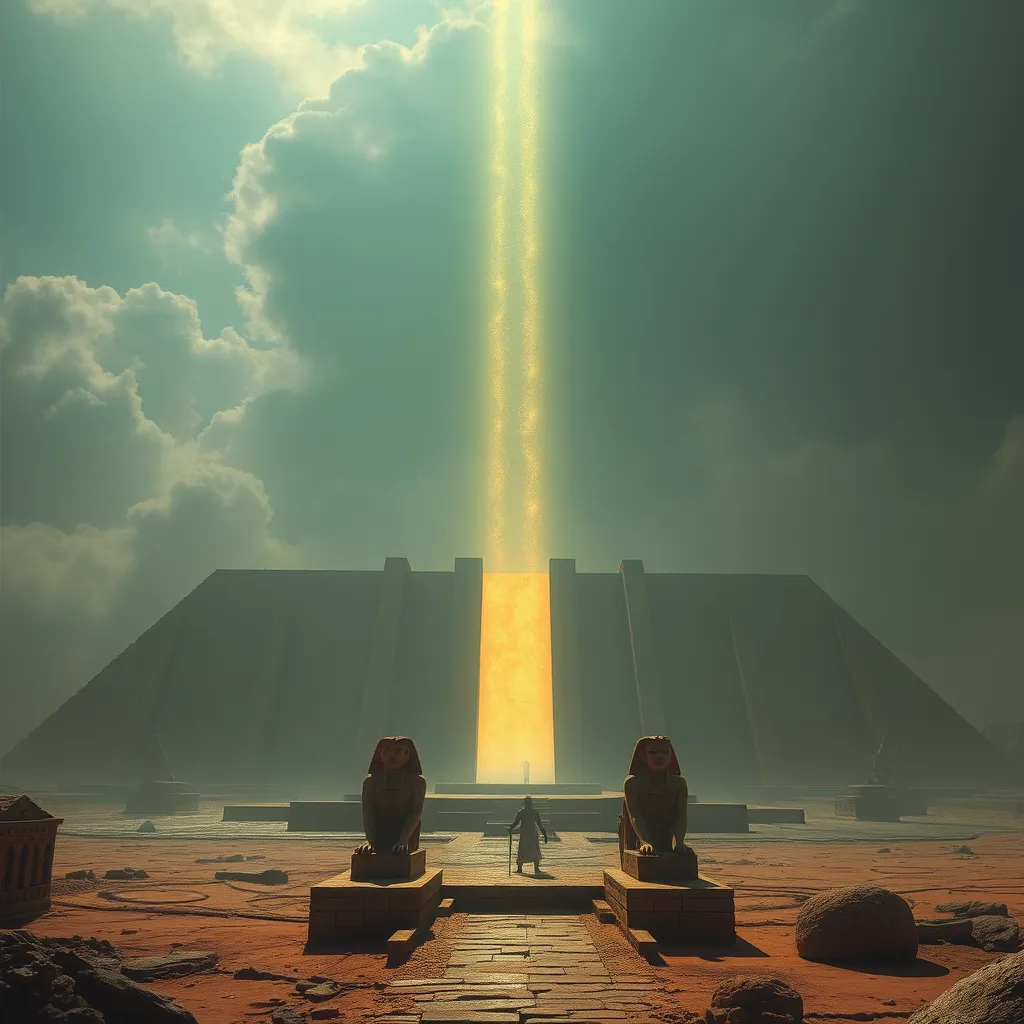The Duat: A Chronicle of the Afterlife
I. Introduction to the Duat
The Duat, often referred to as the realm of the dead, is a significant component of ancient Egyptian mythology. It represents a complex afterlife landscape where souls journey after death. The Duat is not merely a place of rest; it is a realm filled with challenges, encounters with deities, and a reflection of the individual’s life on Earth.
In ancient Egyptian belief, the Duat was essential to the understanding of life, death, and rebirth. It served as both a spiritual domain and a symbolic representation of the journey each soul undertook, emphasizing morality, order, and the eternal cycle of existence.
II. Historical Context of the Duat
The concept of the Duat evolved over thousands of years, shaped by changing beliefs and cultural influences. Initially, the afterlife was viewed as a continuation of life on Earth, but with time, the Duat became more complex, reflecting deeper philosophical ideas about existence and the afterlife.
Key texts, such as the “Book of the Dead” and the “Pyramid Texts,” provide insight into the beliefs surrounding the Duat. These inscriptions detail the rituals, spells, and guidance for the deceased, illustrating the Egyptians’ intricate understanding of life after death.
III. The Geography of the Duat
The landscape of the Duat is richly symbolic, often depicted as a vast, dark expanse filled with rivers, mountains, and various realms. Each area within the Duat serves a specific purpose and holds particular significance for the souls navigating through it.
Major locations within the Duat include:
- The Field of Reeds: A paradise for the worthy, resembling the lush banks of the Nile.
- The Lake of Fire: A place of punishment for the unworthy, symbolizing purification.
- The Hall of Two Truths: The site of the Judgment of the Dead where souls are weighed.
These geographical elements not only served as narrative devices in afterlife myths but also reflected the Egyptians’ values and beliefs about morality and justice.
IV. Deities and Entities of the Duat
The Duat is inhabited by numerous gods and goddesses, each playing a crucial role in the afterlife journey. Some of the most notable deities include:
- Osiris: The god of the afterlife, resurrection, and agriculture, often depicted as a mummified king.
- Anubis: The jackal-headed god associated with mummification and the protection of graves.
- Ra: The sun god, who travels through the Duat at night, symbolizing rebirth and renewal.
These deities guide souls through their journey, providing protection and judgment. Their roles highlight the importance of divine intervention and support in navigating the challenges of the afterlife.
V. The Journey Through the Duat
The journey through the Duat is fraught with trials and challenges that test the soul’s worthiness. Upon death, the soul embarks on a perilous journey, facing various obstacles, including dangerous creatures and treacherous landscapes.
At the heart of this journey is the Judgment of the Dead, a critical event where the deceased’s heart is weighed against the feather of Ma’at, the goddess of truth and justice. This judgment determines whether the soul will be granted eternal life in the Field of Reeds or face annihilation.
The significance of this judgment lies in its reflection of ancient Egyptian values, emphasizing morality, truth, and the consequences of one’s actions in life.
VI. Symbolism and Imagery in Duat Texts
Symbolism plays a vital role in the texts and art associated with the Duat. Key symbols include:
- The Scarab: Represents rebirth and transformation, often associated with the sun god Ra.
- The Scales: Used during the Judgment of the Dead, symbolizing balance and fairness.
- The Ankh: Symbol of life and immortality, frequently depicted in funerary art.
Artistic representations of the Duat, found in tombs and artifacts, serve as visual narratives of the afterlife journey, illustrating the trials faced and the divine assistance provided. These depictions reflect the Egyptians’ profound beliefs in the afterlife and their desire for a successful journey through the Duat.
VII. The Duat in Modern Context
In contemporary culture, the Duat continues to capture the imagination, influencing literature, film, and spiritual practices. Many modern interpretations focus on themes of death and rebirth, drawing parallels between ancient beliefs and contemporary existential questions.
The Duat’s influence can be seen in:
- Literature: Works that explore themes of the afterlife often reference the Duat as a metaphor for personal transformation.
- Film: Movies featuring Egyptian mythology frequently depict the Duat and its deities, showcasing the fascination with ancient beliefs.
- Spiritual Practices: Some modern spiritual movements incorporate elements of ancient Egyptian theology, viewing the Duat as a symbol of personal growth and evolution.
This enduring legacy underscores the significance of the Duat in understanding human beliefs about life, death, and the afterlife.
VIII. Conclusion
The Duat is a vital aspect of ancient Egyptian beliefs, providing insight into their understanding of the afterlife and the moral values they held. It serves as a rich narrative of the soul’s journey, emphasizing the importance of judgment, morality, and divine guidance.
As we reflect on the enduring legacy of the Duat, we recognize its influence on the study of afterlife concepts across cultures and time periods. The fascination with the Duat continues to inspire curiosity and exploration, highlighting the universal quest for understanding what lies beyond death.




